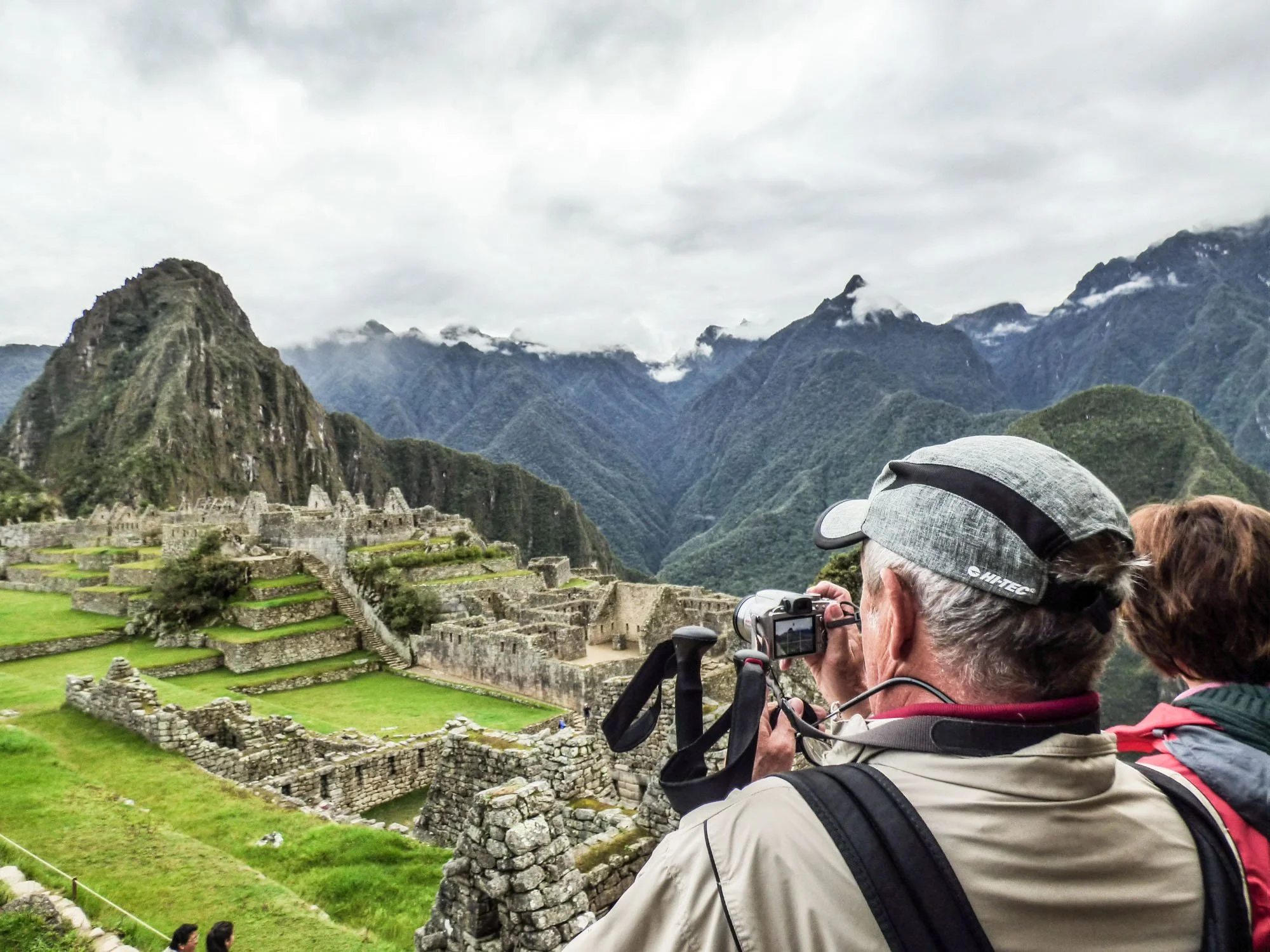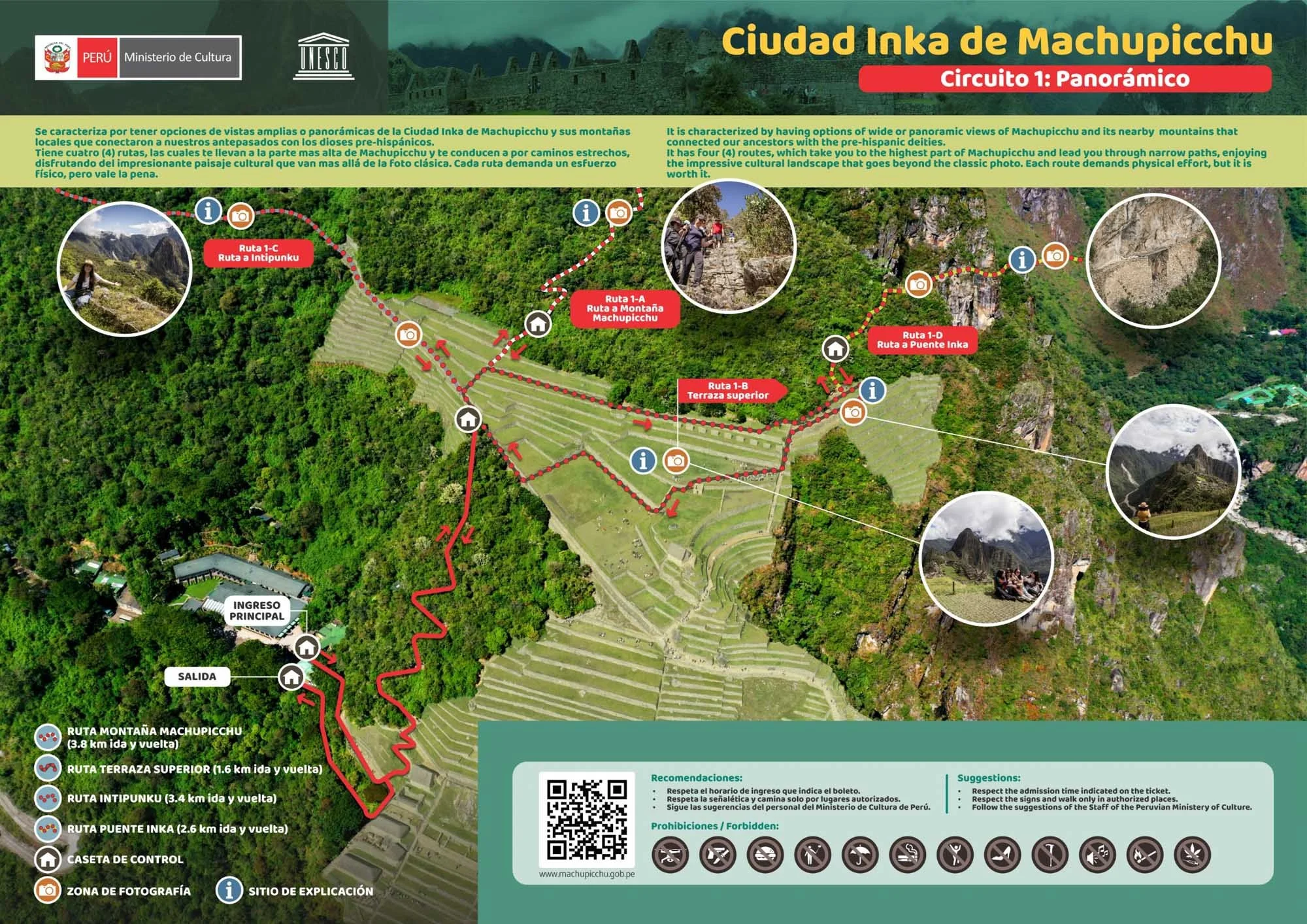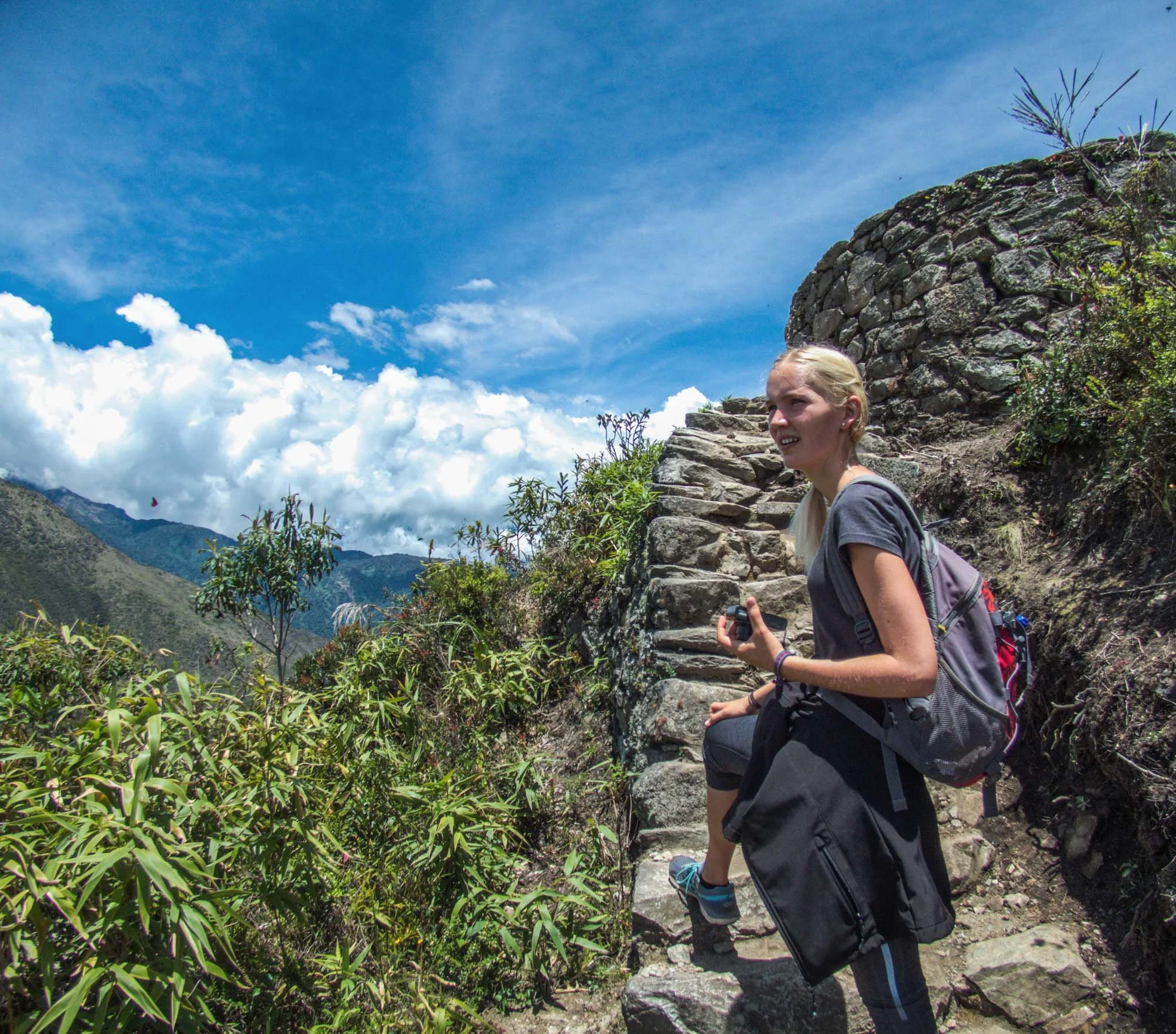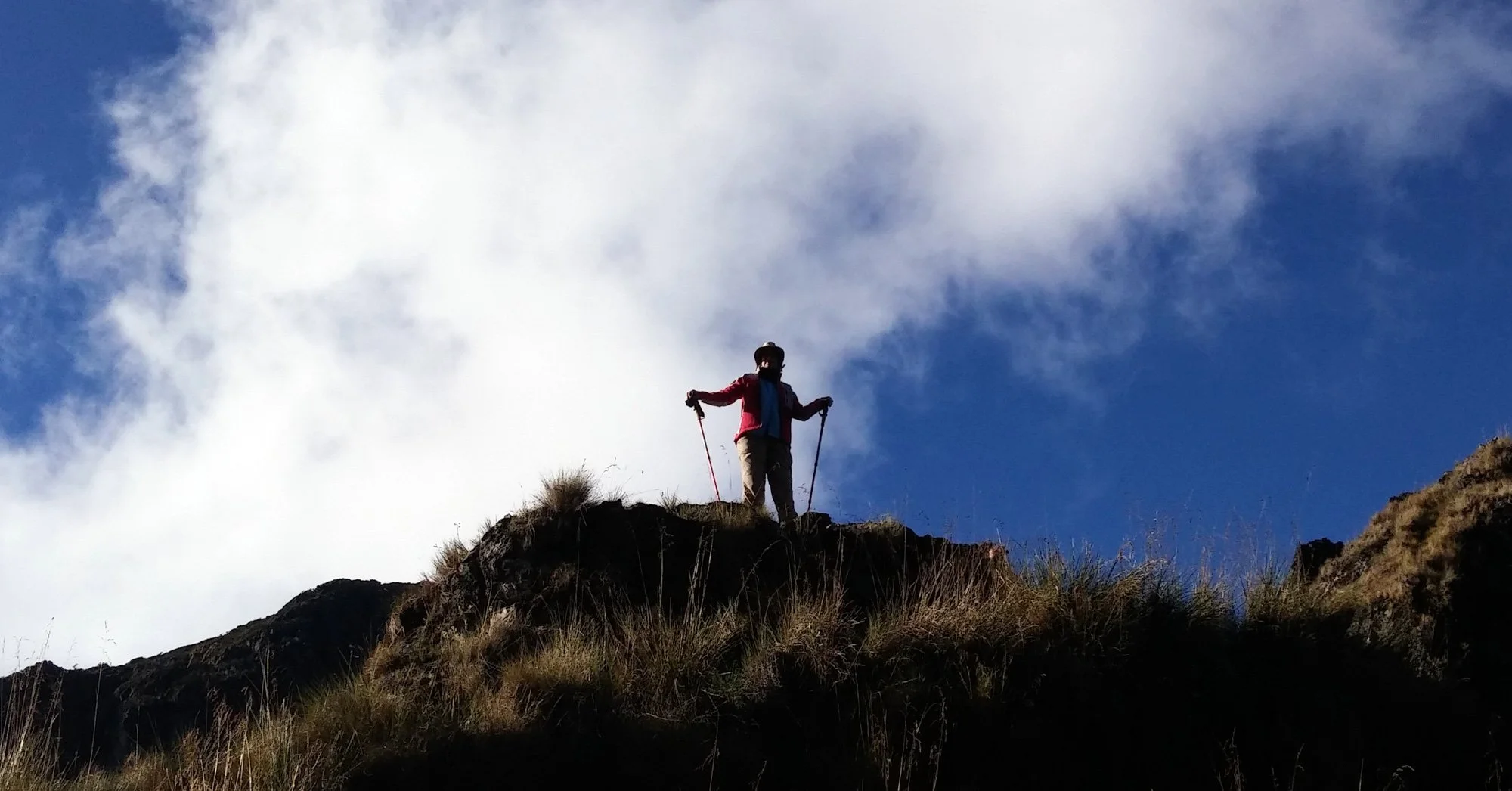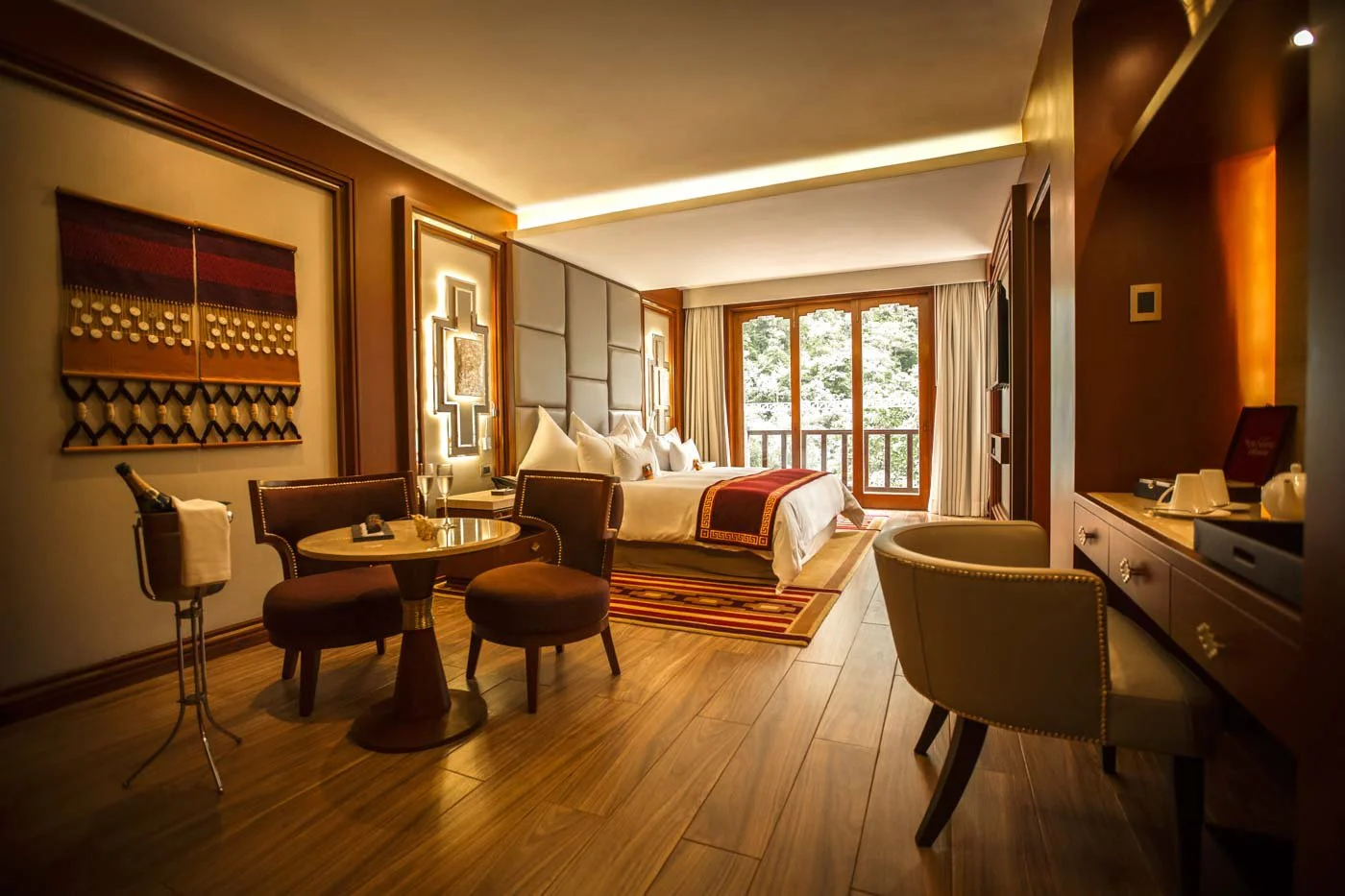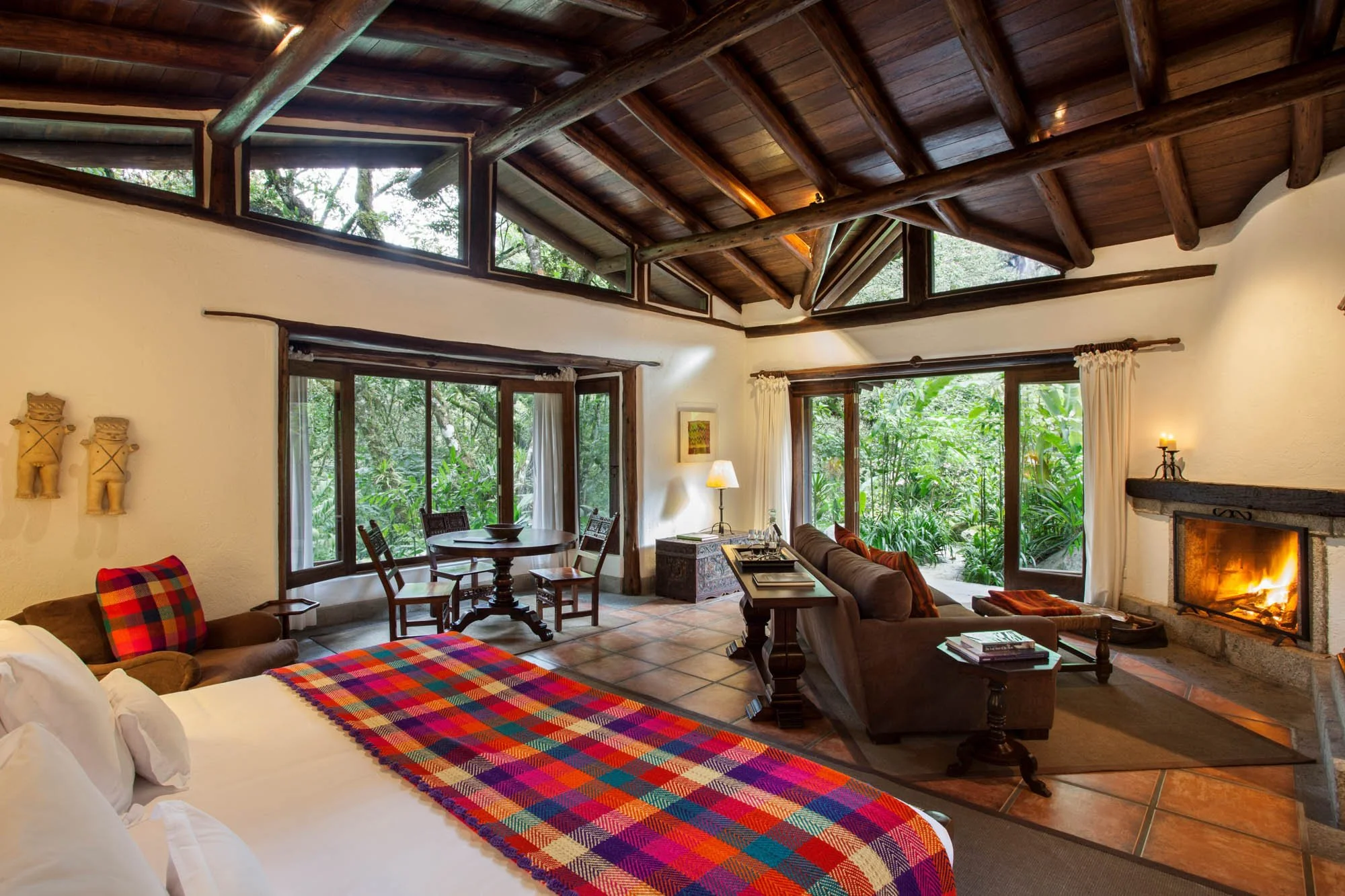Machu Picchu 2025: The Ultimate Travel Guide to Peru's Ancient Wonder
Machu Picchu stands as one of the world's most renowned archaeological sites, captivating hundreds of thousands of travelers each year. This ancient Inca citadel mesmerizes its visitors with its mysterious past and breathtaking beauty, offering a profound connection to the rich legacy of Andean civilizations from pre-Columbian times.
Since our last comprehensive guide, significant changes have occurred in ticketing, access routes, and visitor regulations. Here's our complete 2025 guide to help you plan your unforgettable journey to Machu Picchu, the Lost City of the Incas.
If you're ready to discover Peru's most important Inca citadel, keep reading.
Table of Contents
- The Lost City of Machu Picchu: History
- Where is Machu Picchu Located?
- Machu Picchu Weather & Climate
- Machu Picchu Tickets and Permits: How to Secure Your Entry
- Machu Picchu Montaña vs Huayna Picchu: Which Should You Choose?
- When to Book Your Machu Picchu Entrance Tickets
- How to Get to Machu Picchu
- The Classic Inca Trail Experience
- Alternative Treks to Machu Picchu
- Best Time to Visit Machu Picchu
- Aguas Calientes: Machu Picchu Town & Lodging
1. The Lost City of Machu Picchu: History
Machu Picchu, one of the New Seven Wonders of the World, remains among the most famous archaeological sites globally. Its magnificent architecture, isolated mountain location, and the fact that it remained hidden from the outside world until 1911 make it a truly unique and extraordinary destination.
The name "Machu Picchu" means "Old Mountain" in Quechua, the native language of the Incas. Located approximately four hours from Cusco, this ancient citadel wasn't a military or administrative center. Instead, historians believe Machu Picchu served as a winter retreat for Inca royalty during the reign of Pachacutec, one of the most influential Inca rulers.
Due to its remote location, the site remained untouched for centuries. While local people knew of its existence, using the surrounding areas for grazing their animals, it wasn't until 1911 that Hiram Bingham, in partnership with National Geographic, led an expedition that officially brought Machu Picchu to global attention.
2. Where is Machu Picchu Located?
Machu Picchu sits in the Machu Picchu district (also known as Aguas Calientes) in Urubamba Province, approximately 80 kilometers northwest of Cusco. The ancient citadel perches atop a mountain at 2,430 meters (7,970 feet) above sea level in the small town of Aguas Calientes, named after its natural hot springs. Interestingly, Machu Picchu sits at a lower elevation than both Cusco and the Sacred Valley.
3. Machu Picchu Weather & Climate
Machu Picchu sits at a lower altitude than Cusco and is tucked along the edge of the cloud forest, which gives it a warmer and more humid climate all year round, a milder climate than Cusco city. While Aguas Calientes can be cool in the early morning and late evening, the citadel becomes hot once the sun breaks through, especially when you're walking around or hiking.
Temperatures rise during Peru's summer months, which gives warmer days though this period also coincides with the rainy season from December to March. While that means you should expect frequent showers, you can also expect the landscape is at its greenest, vivid rainbows, and dramatic skies. Of course, you might also get a stormy day, but there’s something truly special about seeing the site slowly appear as the mist lifts, just like a movie.
From April to October, the dry season brings sunnier skies and more stable weather. Temperatures remain mild and skies are clear. This is when you're more likely to experience that “postcard view” of Machu Picchu, bright blue skies, crisp mountain air, and excellent light for photography. It’s also the best season for long hikes like Huayna Picchu or the whole Inca Trail.
Still, the weather in the Andes can shift quickly, so even in the dry season, bringing a light jacket or poncho is always a good idea.
4. Machu Picchu Tickets and Permits: Understanding the New Circuit System
Machu Picchu holds designation as a Historic Sanctuary by UNESCO and maintains World Heritage Site status, ensuring strict protection measures. The Peruvian government limits daily visitors to 5,600 tickets distributed across different time slots.
Since June 1, 2024, a new system of three circuits encompassing 10 routes has been implemented to manage visitor flow during peak hours and protect the archaeological site. Here is the official government site with all the information about the new circuits and routes.
Circuit 1: Machu Picchu Panorámico (Panoramic Views)
This circuit offers beautiful panoramic views of the Machu Picchu citadel and includes access to challenging on-site hikes like Montaña Machu Picchu, Intipunku, and the Inca Bridge. Routes in Circuit 1 focus on panoramic viewpoints rather than urban area exploration, perfect for those looking to enjoy wide, open views of Machu Picchu from above. Keep in mind that this circuit does not include a full walk through the urban sector (where you see temples, fountains, and houses up close), but it’s ideal if your focus is on photography and landscape.
Route 1A – Montaña Machu Picchu Machu Picchu Mountain (Montaña) sits directly opposite Huayna Picchu and the citadel at 3,082 meters (10,112 feet). The ascent takes approximately 1 hour and 20 minutes, making it more challenging due to its numerous steps. However, since it’s located higher than Huayna Picchu, the majestic views of Machu Picchu from this vantage point make the effort absolutely worthwhile. View the route map here.
Duration: 4 hours | Entry slots: 06:00 hrs, 08:00 hrs
Route 1B – Terraza Superior This route leads to the upper terrace where the Guardian's House (Casa del Guardián) is located, the perfect spot for capturing the classic Machu Picchu photograph. Check the route map here.
Duration: 2 hours | Entry slots: 06:00, 07:00, 08:00, 09:00, 10:00, 11:00, 12:00, 13:00, 14:00, 15:00 hrs
Route 1C – Portada Intipunku (Available June 19 - November 2) Intipunku, or the Sun Gate, served as Machu Picchu's main entrance, connecting the Inca Trail to the citadel. The 45-minute hike along ancient stone paths offer incredible views. Check the route map here.
Duration: 3 hours | Entry slots: 08:00, 09:00, 10:00, 11:00 hrs
Route 1D – Puente Inca (Available June 19 - November 2) This ancient Inca bridge once connected parts of the citadel with jungle villages. From here, you'll enjoy stunning views of the beautiful Machu Picchu Canyon. Check the route map here.
Duration: 2 hours | Entry slots: 08:00, 09:00, 10:00, 11:00 hrs
Circuit 2: Machu Picchu Clásico (Classic Experience)
The most popular route for exploring the citadel's urban area, including the most important buildings and temples of Machu Picchu.
Route 2A – Ruta Diseñada. This classic route, favoured by many visitors, begins in the agricultural area, offering full views of Machu Picchu. Continue to Llaqta Punku (the Main Entrance), where you will find a viewpoint offering panoramic views of the Sun Temple. Then continue to the Main Square, Roca Sagrada and the Water Mirrors. Check the route map here.
Duration: 2 hours and 30 minutes | Entry slots: 06:00, 07:00, 08:00, 09:00, 10:00, 11:00, 12:00, 13:00, 14:00, 15:00 hrs
Route 2B – Ruta Terraza Inferior Similar to Route 2A, this path also provides access to the upper terrace for the iconic Machu Picchu photograph. Check the route map here.
Duration: 2 hours and 30 minutes | Entry slots: 06:00, 07:00, 08:00, 09:00, 10:00, 11:00, 12:00, 13:00, 14:00, 15:00 hrs
Circuit 3: Machu Picchu Realeza (Royalty Circuit)
This one offers a walk-through Machu Picchu's lower section, featuring sacred Inca landmarks. Depending on the route you choose, it can go from an easy walk experience to a challenging hike to Huayna Picchu, Huchuy Picchu, or the Great Cavern.
Route 3A – Ruta Huayna Picchu Ideal for adventurous travelers, this route combines a visit to Machu Picchu’s lower ceremonial area with the challenging climb to Huayna Picchu. The experience begins at the Agricultural Terraces, an excellent spot to capture the iconic photo, before continuing through sacred landmarks such as the Temple of the Sun, Inca House, and Ceremonial Fountains. From there, the steep and narrow ascent to Huayna Picchu begins. Entry is limited to small, timed groups, and children under 12 are not allowed. Check the route map here.
Duration: 4 hours | Entry slots: 07:00, 09:00 hrs
Route 3B – Ruta Diseñada Starting at the Agricultural Terraces, this route offers close-up views of Machu Picchu's iconic landmarks, including the Temple of the Sun, Inca House, Ceremonial Fountains, and Temple of the Condor. This more relaxed option includes wheelchair-accessible sections. Check the route map here.
Duration: 2 hours and 30 minutes | Entry slots: 06:00, 07:00, 08:00, 09:00, 10:00, 11:00, 12:00, 13:00, 14:00, 15:00 hrs
Route 3C – Ruta Gran Caverna (Available June 19 - November 2) This route leads to the mysterious Great Cavern (Temple of the Moon) hidden within Huayna Picchu. After visiting key sites, you'll hike deep into the forest to reach this cavern with spectacular valley views. This route is more demanding but it’s totally worth it. Check the route map here.
Duration: 4 hours | Entry slots: 07:00, 08:00 hrs
Route 3D – Ruta Huchuy Picchu (Available June 19 - November 2) This entrance allows you to explore Machu Picchu's religious sector, including the Temple of the Sun, Inca House, and Temple of the Condor, plus a one-hour climb to Huchuy Picchu summit for sweeping citadel views. Check the route map here.
Duration: 2 hours | Entry slots: 09:00, 11:00 hrs
Keep in mind that there's a 30-minute grace period from your scheduled entry time (some flexibility may be allowed). The site closes between 5:00 and 5:30 PM.
5. Machu Picchu Montaña vs Huayna Picchu: Which Should You Choose?
“Machu Picchu Montaña or Huayna Picchu, which one should I choose?” It’s one of the most common questions travelers ask when planning a hike at Machu Picchu. The truth is, there’s no definitive “better” option, both Machu Picchu Mountain and Huayna Picchu offer unique and unforgettable experiences. It all comes down to what kind of adventure you’re looking for and what you’d like to get out of the hike.
Huayna Picchu
The “Young Mountain,” or Huayna Picchu, rises to 2,720 meters (8,924 feet) and is the iconic peak that appears in the background of every classic Machu Picchu photo. It’s the second most famous mountain in the area, after Machu Picchu itself, and one of the most sought-after hikes in the citadel.
The trail takes about 45 minutes to 1 hour to reach the summit, following a steep and narrow stone path with several switchbacks. It’s a challenging route, featuring sharp inclines, uneven steps, and sections equipped with cables for extra support. While not extremely challenging, it's not ideal for those with vertigo or knee issues, as you'll be navigating cliffside paths and hiking up and down steep, slippery stairs.
That said, the payoff is worth every step. From the top, you’ll get a jaw-dropping view of the Machu Picchu ruins nestled in the middle of the lush cloud forest, one of the most unique perspectives you can get of the site.
Huayna Picchu is also home to a few lesser-known archaeological remains, adding an extra historical layer to the adventure. The surrounding landscape is part of the tropical jungle, rich in flora and fauna. Keep an eye out for colorful birds, butterflies, and all kinds of jungle insects as you make your way through the dense, green vegetation.
Because of its popularity and the narrowness of the trail, this hike tends to be more crowded, and tickets sell out quickly, so booking in advance is a must.
Highlights: Incredible views, jungle surroundings, and hidden archaeological sites.
Things to consider: Steep and narrow trail, some exposure to cliffs, and limited ticket availability.
To do this hike, you’ll need to purchase a ticket for Circuit 3: Route 3A – Huayna Picchu Mountain. This ticket grants access to Machu Picchu’s lower ceremonial area, as well as the Huayna Picchu trail, but not the main urban areas of the citadel. For more details about entrance circuits and available routes, check the section below.
Montaña Machu Picchu
Standing tall at 3,082 meters (10,112 feet), Machu Picchu Mountain, or Montaña, as it's commonly called, is the highest peak overlooking the Inca citadel. If you're up for a solid hiking challenge paired with some of the most spectacular views in the area, this is the route for you.
The hike takes around 1 hour and 20 minutes and follows a well-marked, stepped trail that gradually winds its way up the mountain. It’s a physically demanding route, but the trail is wider and less steep than the one to Huayna Picchu, making it a great option for travelers who want an adventure without the intense heights or tight cliffside paths. That said, there are still sections where the trail runs alongside sheer drops, so caution is always advised.
Because fewer people choose this route, the trail tends to be less crowded, offering a more peaceful hiking experience. And the reward? An unbeatable panoramic view of the entire Machu Picchu complex, including the distant Huayna Picchu, all wrapped in the dramatic backdrop of the Andean mountains and cloud forest.
While you won’t find archaeological sites at the top like in Huayna Picchu, the beauty of the natural surroundings makes up for it. The route is home to butterfly orchids, exotic birds, and other highland jungle species, all thriving in this humid, tropical climate.
Highlights: Less crowded trail, higher elevation for wider views, gentler path compared to Huayna Picchu
Things to consider: No archaeological sites at the top, and the hike is longer, but absolutely worth it.
To hike Montaña Machu Picchu, you’ll need to buy a ticket for Circuit 1: Route 1A – Machu Picchu Mountain. This ticket gives you access to the Montaña trail and includes panoramic views of the citadel from the agricultural terraces. However, it does not include access to the main urban areas of Machu Picchu. Head back to the previous section for more details on entrance circuits and routes.
Huayna Picchu vs. Machu Picchu Mountain: A Side-by-Side Comparison
Here’s a comparison of the two hikes so you can decide which one is better for you:
| Feature | Huayna Picchu | Machu Picchu Montaña |
|---|---|---|
| Elevation | ~2,720 m (8,924 ft) | ~3,082 m (10,112 ft) |
| Elevation Gain | ~290 m (951 ft) | ~621 m (2,037 ft) |
| Trail Length & Time | ~2.5 km; ~1.5–2 hrs round‑trip | ~3.9 km; ~2.5–3 hrs round‑trip |
| Difficulty & Terrain | Steep (up to 60°), narrow stone stairs, via ferrata cables | Longer climb with gentler slopes (~30°), wider trail, fewer exposed sections |
| Exposure to Heights | High — cliffside sections, narrow paths; risky if afraid of heights | Moderate — some cliffside areas, but generally less intimidating |
| Trail Crowds & Permits | More popular, frequent sell‑outs | Less popular, easier to book |
| Summit Conditions | Small, uneven summit — crowded and challenging in tight spaces | Spacious, flat summit offering 360° views |
| Archaeological Highlights | Features Inca terraces, Temple of the Moon & Great Cavern | No ruins at summit — nature-focused experience |
| Views | Iconic city views, close-ups of ruins, Machu Picchu Canyon | Broad panoramas — entire citadel, Huayna Picchu, Salkantay and more |
| Age Restrictions | ≥ 12 yrs in others | No age limit |
| Ticket/Circuit Access | Circuit 3A – includes trail + lower temples, excludes main urban areas | Circuit 1A – includes trail + upper terraces, excludes urban area and main temples |
| Entry Time Slots | 7 am & 9 am | 6 am & 8 am |
| Recommended For | Adventurers seeking steep, historic trails and ruins | Hikers wanting panoramic vistas with less intensity |
| Considerations | Crowded, exposure to heights, narrow summit | Great panoramic views, longer and more physically demanding |
Our recommendation
Choose Huayna Picchu if you want the classic Instagram shot, shorter but sharper climb, and love having Inca ruins along the way, just be ready for steep stairs and narrow ledges.
Go for Machu Picchu Montaña if you prefer a more gradual ascent, expansive summit with 360° views, fewer crowds, and don’t mind a longer hike with a focus on natural scenery over ancient structures.
6. When to book my Machu Picchu entrance tickets?
Now that you know all there is to know about Machu Picchu circuits and routes, when should you start looking for your tickets? Short answer: make sure to book in advance!
With the growing popularity of the citadel and the updated ticketing system, it has become more difficult to secure entrance permits, especially for the most classic and sought-after routes. That’s why we strongly recommend booking your tickets at least 3 to 4 months ahead if you’re traveling during high season or around major holidays. Also, entrance tickets for 2026 are not available at the moment, sales are expected to open toward the end of this year or early 2026, so stay tuned if you're planning a future trip!
Official Ticketing
To secure your hiking adventure at Machu Picchu, tickets must be purchased through the official site: Tu Boleto Cultura at https://tuboleto.cultura.pe/llaqta_machupicchu.This is the only authorized government platform for booking entrance circuits and mountains within the Machu Picchu Sanctuary.
Let Us Handle It Instead
If you prefer a smoother experience, leave the booking to us. When we plan your tailor-made Peru trip, we take care of securing your tickets, no stress, no hassle.
7. How to Get to Machu Picchu
Back in Inca times, people would walk for several days along the one and only Inca Trail to reach Machu Picchu. And while that iconic trek is still possible today, there are now many more ways to get to the citadel.
These days, getting to Machu Picchu from Cusco is actually pretty straightforward. It might take a few hours, but the journey is absolutely unforgettable.
Train to Machu Picchu Town
Two main stations serve train routes to Aguas Calientes: Poroy (30 minutes from Cusco city center) and Ollantaytambo (2 hours from Cusco in the Sacred Valley). Both destinations lead to Aguas Calientes, with journey times varying by departure point.
Poroy to Aguas Calientes: 4 hours
Ollantaytambo to Aguas Calientes: 1 hour 30 minutes
Two companies operate this route: Peru Rail and Inca Rail, each offering various service levels.
Peru Rail
Expedition: Basic service with essential amenities, no included food or drinks. Multiple daily departures at the most affordable price point.
Vistadome: Comfortable service including small snacks and live performances (on return journeys from Aguas Calientes). Several daily departures at moderate pricing.
Vistadome Observatory: Upgraded Vistadome service with observatory bar car and non-alcoholic beverages throughout the journey.
Hiram Bingham: The ultimate luxury experience by Belmond with daily morning departure from Poroy. Includes onboard entertainment, three-course gourmet meals, bus transport to the citadel, Machu Picchu tickets, and cocktails at Sanctuary Lodge.
Inca Rail Services
The Voyager: Basic but charming service with Ollantay show (one-way) on the Ollantaytambo route. Snacks and drinks available for purchase. It’s also the most affordable option for travelers.
The 360°: Comfortable wagons with panoramic views and open-air observatory car. Includes snacks, non-alcoholic drinks, and Ollantay show on your way to Aguas Calientes.
The First Class: Luxury service featuring three-course gourmet meals with wine, wine ceremony, live music, lounge bar, balcony access, and private bus to Machu Picchu.
The Private Machu Picchu Train: Most exclusive train service to Machu Picchu for up to 8 travelers, including a gourmet meal, open bar, live music, and private bus transport up to the citadel.
Upon arrival in Aguas Calientes, you have two options to reach the citadel:
Bus to Machu Picchu
CONSETTUR operates basic but comfortable shuttle buses from the terminal near the local market and train station on Av. Hermanos Ayar, taking travelers up a 9 km (30-minute) zigzag road to the entrance of Machu Picchu. Buses are equipped with cushioned seats, seat belts, panoramic windows, and luggage space, though they do not have onboard bathrooms.
Shuttles run every 10–15 minutes from 5:30 AM to 3:30 PM for the uphill journey, with return trips running until around 5:30–6:00 PM. Boarding is based on your entrance ticket schedule, but during busy hours, especially before 7:00 AM, we recommend arriving at the terminal at least one hour early to avoid delays.
This service is especially convenient for travelers hiking Huayna Picchu or Machu Picchu Mountain, as it helps conserve energy for the more demanding climbs ahead.
You can check updated schedules and buy tickets at the official site.
Hiking from Aguas Calientes
The second option to reach the citadel is perfect for those looking for a more active experience but who didn’t get the chance to do a trek to Machu Picchu. The hike from Aguas Calientes takes about an hour and involves climbing several steep stone steps up to the main entrance.
It’s important to note that although the hike is exciting, it leads you to the entrance gates, not a direct view of the citadel itself. Still, the main advantage is that this route is completely free, all you need is your Machu Picchu ticket.
8. The Inca Trail Experience
Hiking to Machu Picchu via the ancient Inca Trail remains a preferred option for many travelers, offering the authentic experience of arriving on foot via the same paths used by the Incas.
4-Day Classic Inca Trail
Starting at kilometer 82 along the train route connecting Cusco to Machu Picchu, this journey involves 4 days of hiking 6-8 hours daily along ancient stone trails while camping under starry skies. You'll pass fascinating archaeological sites, diverse ecosystems, and culminate with stunning views of Machu Picchu citadel, truly a lifetime experience.
Check our 4-day Classic Inca Trail itinerary
2-Day Short Inca Trail
Starting at kilometer 104 on the train route from Ollantaytambo to Machu Picchu, the Short Inca Trail has become one of the best alternatives to the classic 4-day trek, especially when permits for the longer itinerary are sold out. It’s also a great option if you're looking for an incredible hiking experience that isn’t too demanding. This itinerary lasts 2 days, but the hike itself takes place on the first day, lasting about 6 to 7 hours depending on your physical condition, some people even make it in just 4 hours!
Important Update: Starting May 27th, Inca Trail entrance tickets (2 or 4-day) include only the first day's trail access and panoramic citadel views (similar to Circuit 1) upon arrival. To explore the citadel interior, you must purchase an additional entrance ticket.
9. Inca Trail Alternatives to Machu Picchu
If you didn’t manage to get your Inca Trail tickets on time and it’s now too late, don’t worry, there are plenty of great alternative hikes to Machu Picchu. From the Short Inca Trail (a 2-day itinerary mentioned above) to the Choquequirao Trek (5 days) or the Lares Trek (5 days), each option offers a unique and active journey through the Andes. Let us know if you’d like more information about any of these alternative routes!
10. When is the Best Time to Visit Machu Picchu?
Peru, especially the Andes, has two main seasons throughout the year: the rainy season and the dry season. The rainy season lasts from December to March, bringing heavy rainfall across the Andes and the jungle. Interestingly, this is also summertime in Peru.
In contrast, the dry season runs from April through October or November. Even though it's technically winter in Peru, it’s the preferred time for many travelers thanks to the clear skies over the Andean regions. Not in Lima, though, unfortunately!
Machu Picchu Morning vs Afternoon Visits
We used to recommend visiting Machu Picchu in the afternoon during the dry season, as it was generally less crowded than in the mornings, and that still holds true. Afternoon visits tend to have fewer people, offering a quieter experience inside the citadel.
However, since the ticketing system changed, all time slots now sell out, regardless of crowd levels, so planning ahead is essential no matter when you go.
That said, if you’re visiting during the rainy season, morning tickets are still a safer bet weather-wise. Rain showers are more common in the early hours but often clear by midday, revealing stunning skies and beautiful light for your visit.
Is Machu Picchu Open all year?
Yes, Machu Picchu remains open year-round! Visits between December and March may encounter brief showers or cloudy days, but these conditions rarely cause significant concerns.
Note that certain routes have seasonal restrictions, operating only from June 19 to November 2:
Route 1C – Portada Intipunku
Route 1D – Puente Inca
Route 3C – Ruta Gran Caverna
Route 3D – Ruta Huchuy Picchu
11. Aguas Calientes: Machu Picchu Town
How Long to Stay in Aguas Calientes?
Since the visit to the citadel can take around 3 hours, we recommend spending at least one night in town. However, if your schedule allows, we suggest dedicating more time to exploring Cusco city or the Sacred Valley, as there’s so much to see and experience in these areas. Day trips to Machu Picchu are possible for time-conscious travelers.
Where to stay in Aguas Calientes?
Aguas Calientes offers diverse lodging options from luxury hotels to comfortable budget hostels. During dry season (high season), book accommodations well in advance as the best options fill quickly. Here are some of our all-time favorites:
#1 Sumaq Machu Picchu Hotel (☆☆☆☆☆)
Located right by the Vilcanota River, Sumaq blends Andean traditions with upscale comfort. Guests can enjoy gourmet Peruvian cuisine, spa treatments, and exclusive in-house activities like cooking classes, spiritual ceremonies led by local shamans, or special experiences for kids. Website.
Category: Luxury
Ideal for: Luxury travelers looking for a culturally immersive and relaxing experience before or after visiting Machu Picchu.
#2 Inkaterra Machu Picchu Pueblo Hotel (☆☆☆☆☆)
The property is known for its eco-conscious design and immersive nature experiences. Be sure to check out their complimentary excursions and on-site activities, like the orchid trail, birdwatching walks, nature tours, or a visit to the tea house. Website.
Category: Luxury / Boutique Eco-Lodge
Ideal for: Nature lovers and eco-conscious travelers who want a peaceful, immersive experience close to Machu Picchu.
#3 Casa del Sol Machu Picchu (☆☆☆☆)
Overlooking the river and just steps from the bus stop to the citadel, this boutique hotel offers warm hospitality, locally inspired decor, and great spa services in a prime location. Website.
Category: Upper-midrange / Boutique
Ideal for: Couples or travelers looking for comfort, location, and charm without going fully high-end.
#4 El MaPi by Inkaterra (☆☆☆☆)
Modern and vibrant, El MaPi is Inkaterra’s more casual sister property, with eco-friendly practices and a stylish urban feel. It has a lively atmosphere with organic dining and a pisco bar. Website.
Category: Upper-midrange / Contemporary
Ideal for: Younger travelers or groups looking for a fun, sustainable, and design-forward stay.
#5 Casa Andina Standard Machu Picchu (☆☆☆)
A practical and reliable choice offering clean rooms, great service, and one of the best breakfasts in town. It’s conveniently located near the train and bus stations. Website.
Category: Standard / Midrange
Ideal for: Travelers seeking a trusted, no-frills hotel with good value and comfort.
#6 Hatun Inti Classic (☆☆)
A cozy and affordable option with mountain views, comfortable rooms, and personalized service. It offers a quieter stay compared to many other budget hotels in town. Website.
Category: Budget / Simple
Ideal for: Budget-conscious travelers who want charm and convenience without sacrificing comfort.
Ready for Your Machu Picchu Adventure?
The Lost City of the Incas awaits your discovery. With proper planning and this comprehensive guide, you're prepared for an unforgettable journey to one of the world's most remarkable archaeological wonders. Don't wait, start planning your lifetime trip to Machu Picchu today!

